Consequently, British bombers switched to night raids.
The Luftwaffes weapons and tactics needed to be changed.
These changes were helpful, but on their own they were not enough.
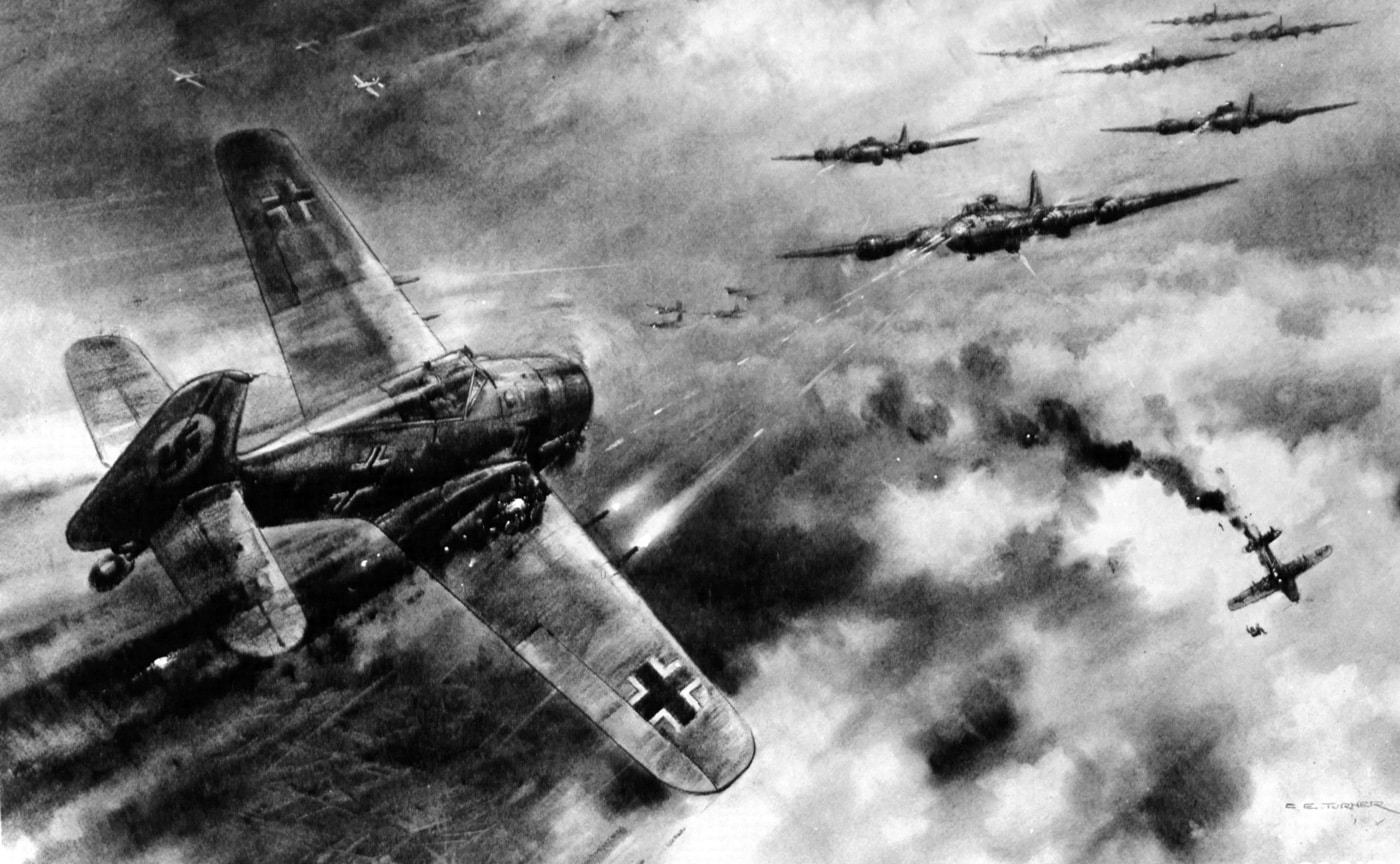
This U.S.A.A.F. illustration shows a Luftwaffe Fw 190 fighter attacking a B-17 formation head-on. This approach gave the Luftwaffe fighters their best chance to avoid the Flying Fortresses’ guns and land hits. Image: NARA
These hits could be fatal for the bombers.
The following are some of the Luftwaffes specialized anti-bomber weapons.
Called the Werfer-Granate 21 rocket launcher, or W. Gr.
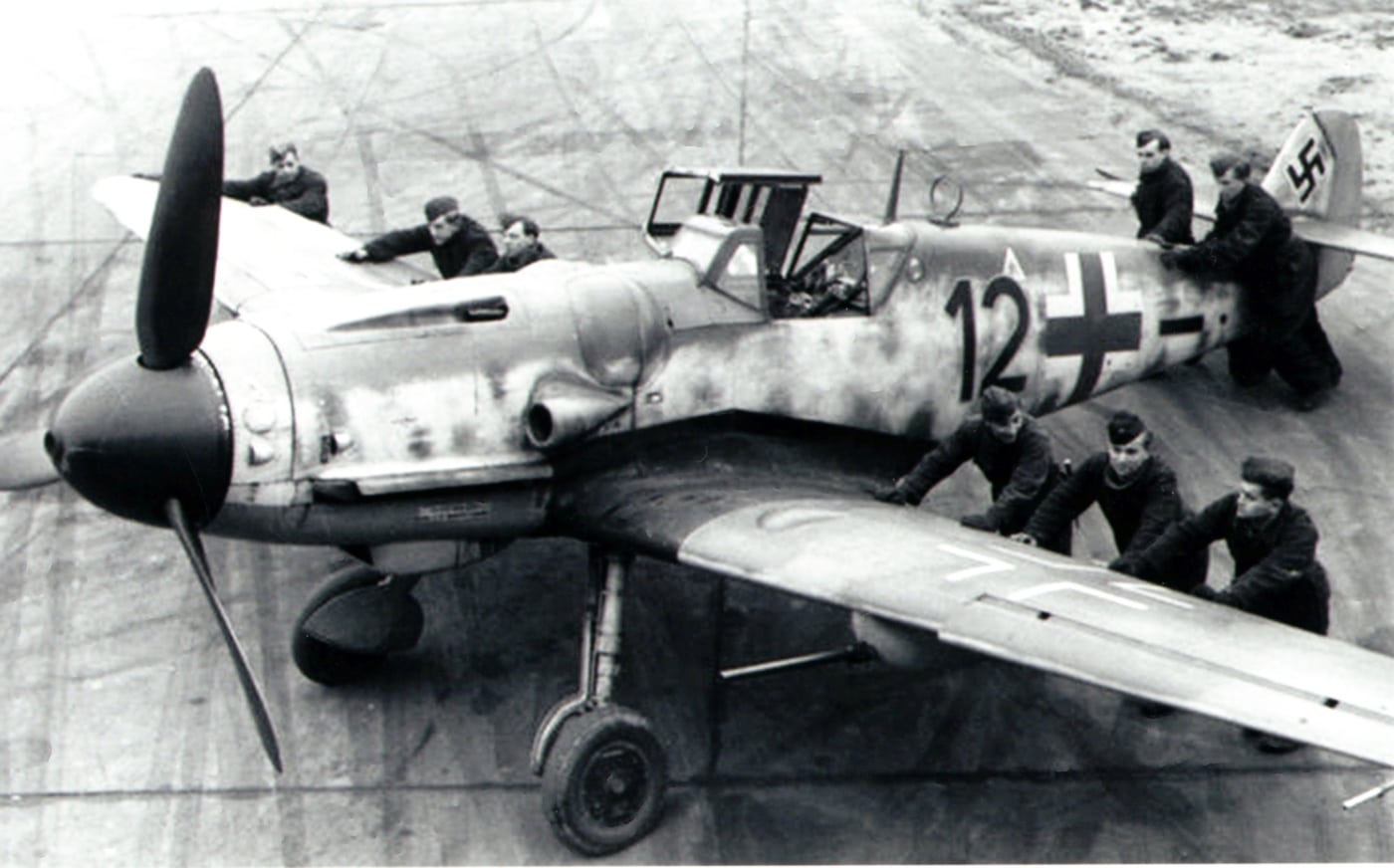
Bf 109G fighters often carried two 20mm MG151/20 cannons in under-wing pods to supplement its engine-mounted 20mm MG151/20 and 13mm MG 131s in the nose. Image: Author’s collection
21, these were referred to as the BR 21 in much of the German literature from the time.
The mortars were sighted by Revi 16B reflector sight fired simultaneously by a separate button on the control column.
Understandably, they were not popular among the crews.
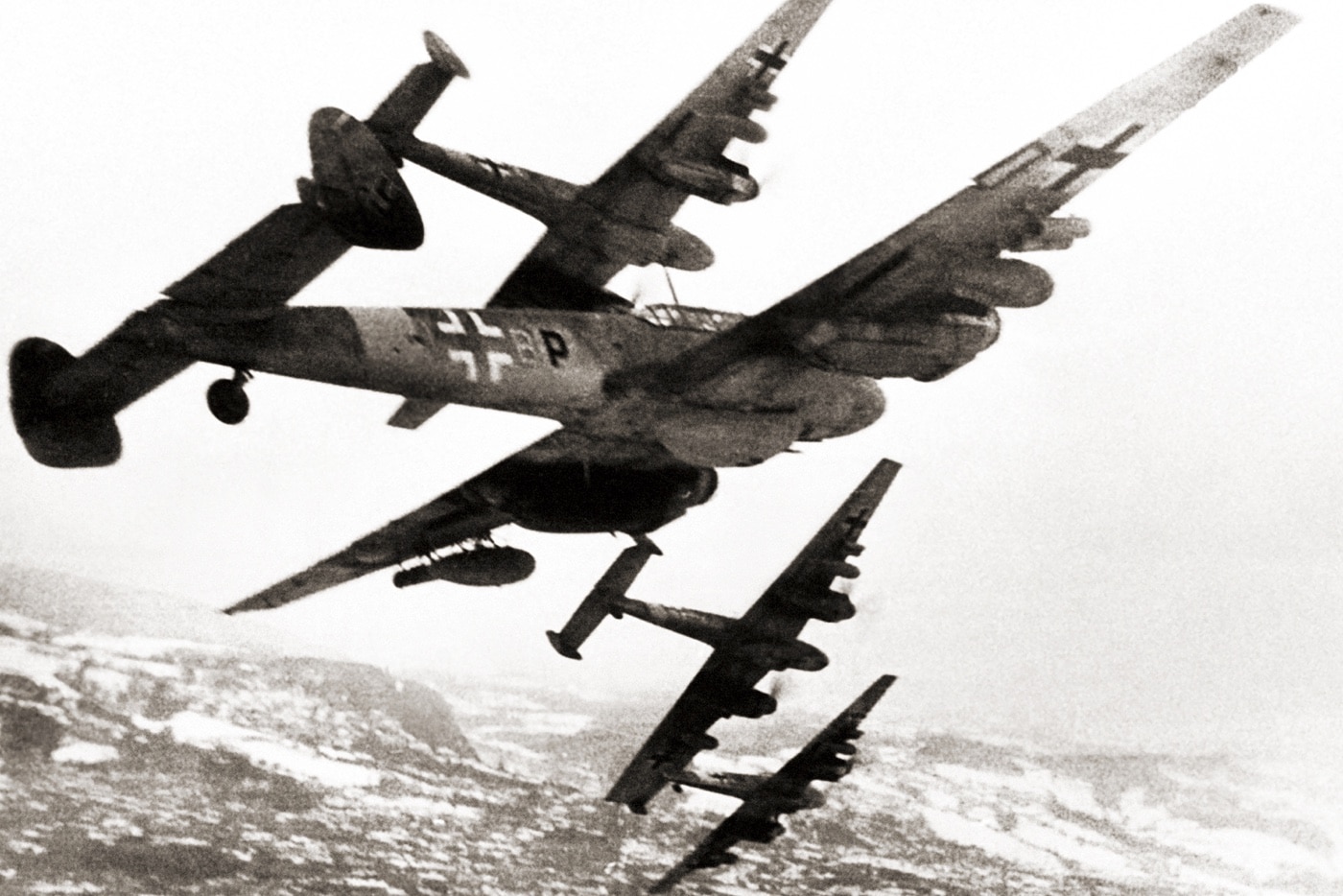
These Bf 110G2 fighters carry heavy armament: 20mm and 30mm cannons in the nose, two 20mm MG 151 cannons in pods and four W. Gr. 21 rocket launchers under their wings. Image: Author’s collection
However, in the autumn of 1943, the 8thAir Force considered the rockets a major threat.
Aside from the rare direct hit, the biggest successes of the W.Gr.
This concept arrived in the summer of 1943 in the shape of 30mm MK 108 made by Rheinmetall-Borsig.
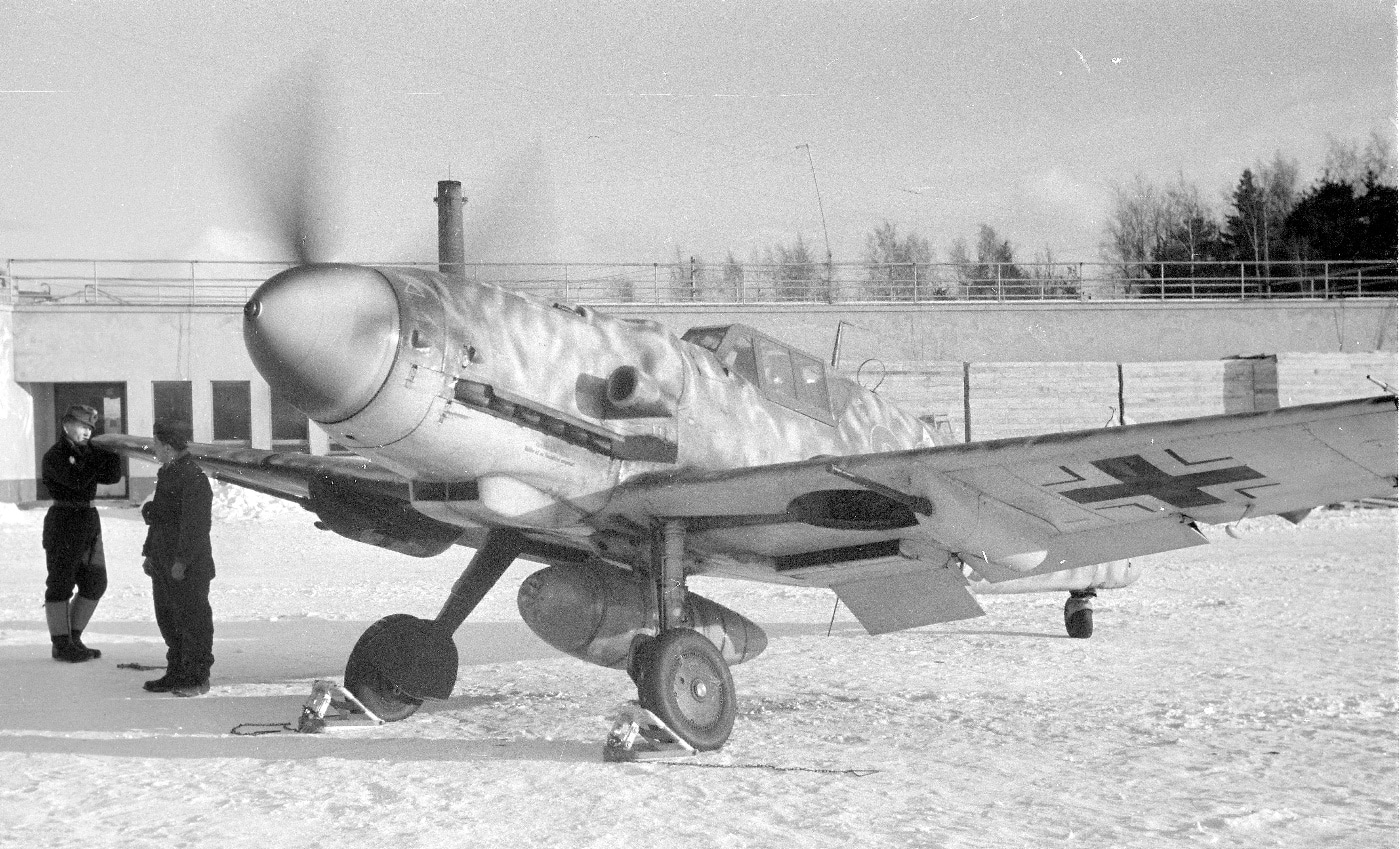
On the Eastern Front, this Bf 109G is armed with a centrally mounted 20mm MG 151 and twin 13mm MG 131s. They were highly accurate but not powerful enough for bomber-interception work. Image: SA-Kuva
The MK 108 was relatively light and could be fitted beneath the wings of single-engine fighters.
In 1944, the Luftwaffe began to use specializedSturmjagersquadrons, flying heavily armed and armored Fw 190s.
At 200 meters, the 30mm MK 108s would be fired on the inboard engines and the wing root.
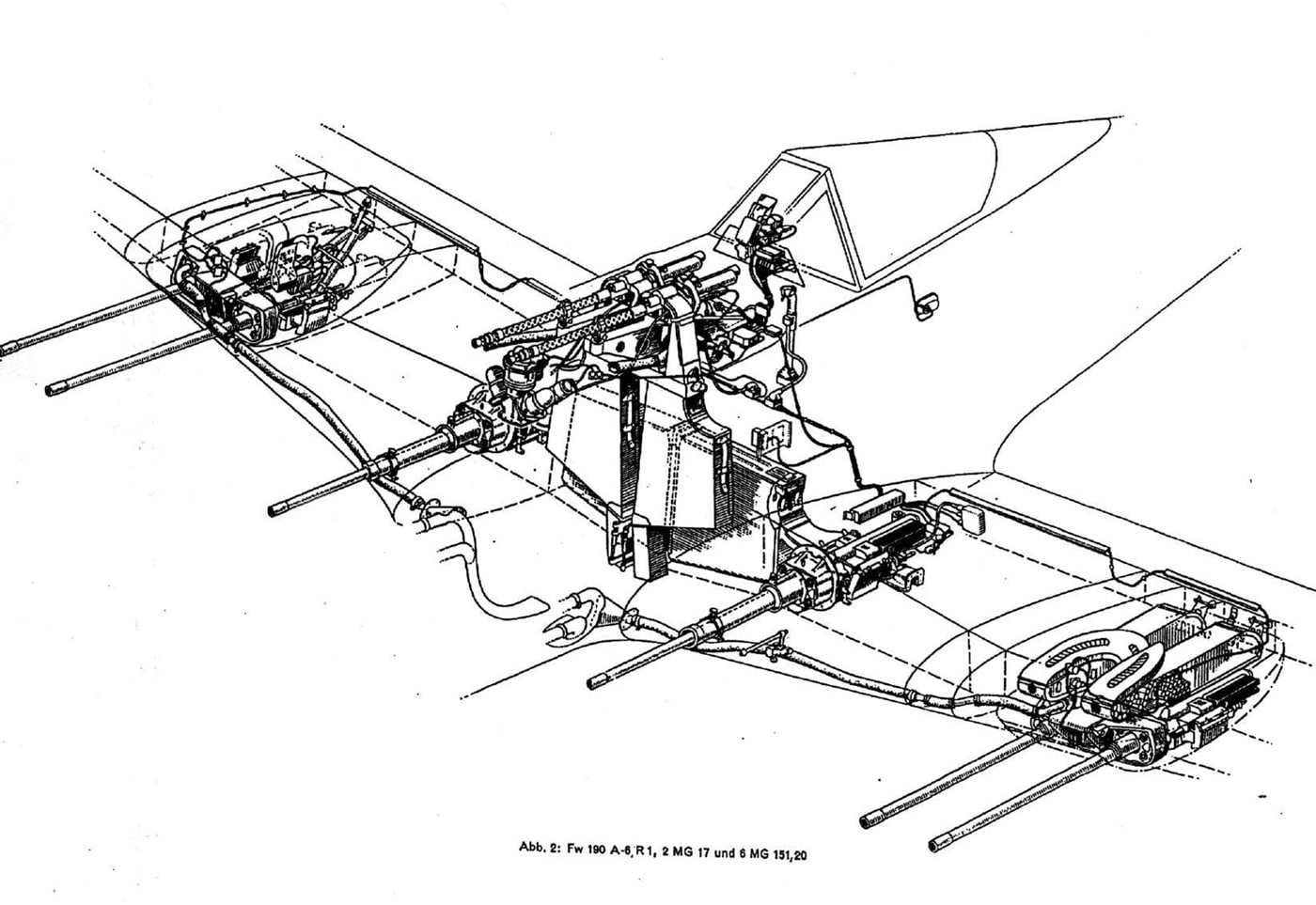
The 20mm MG 151 proved to be an effective weapon against the American Flying Fortresses. This Fw 190 variant carried a total of six MG 151s, which provided tremendous firepower. Image: Author’s collection
The BK-5 handbook provides a very optimistic estimate of 900 meters as an effective range.
Impressive though the big gun may have looked, successes for the BK-5 armed Me 410s were few.
The danger from the bomber gunners .50-caliber machine guns was a constant, unflinching threat.
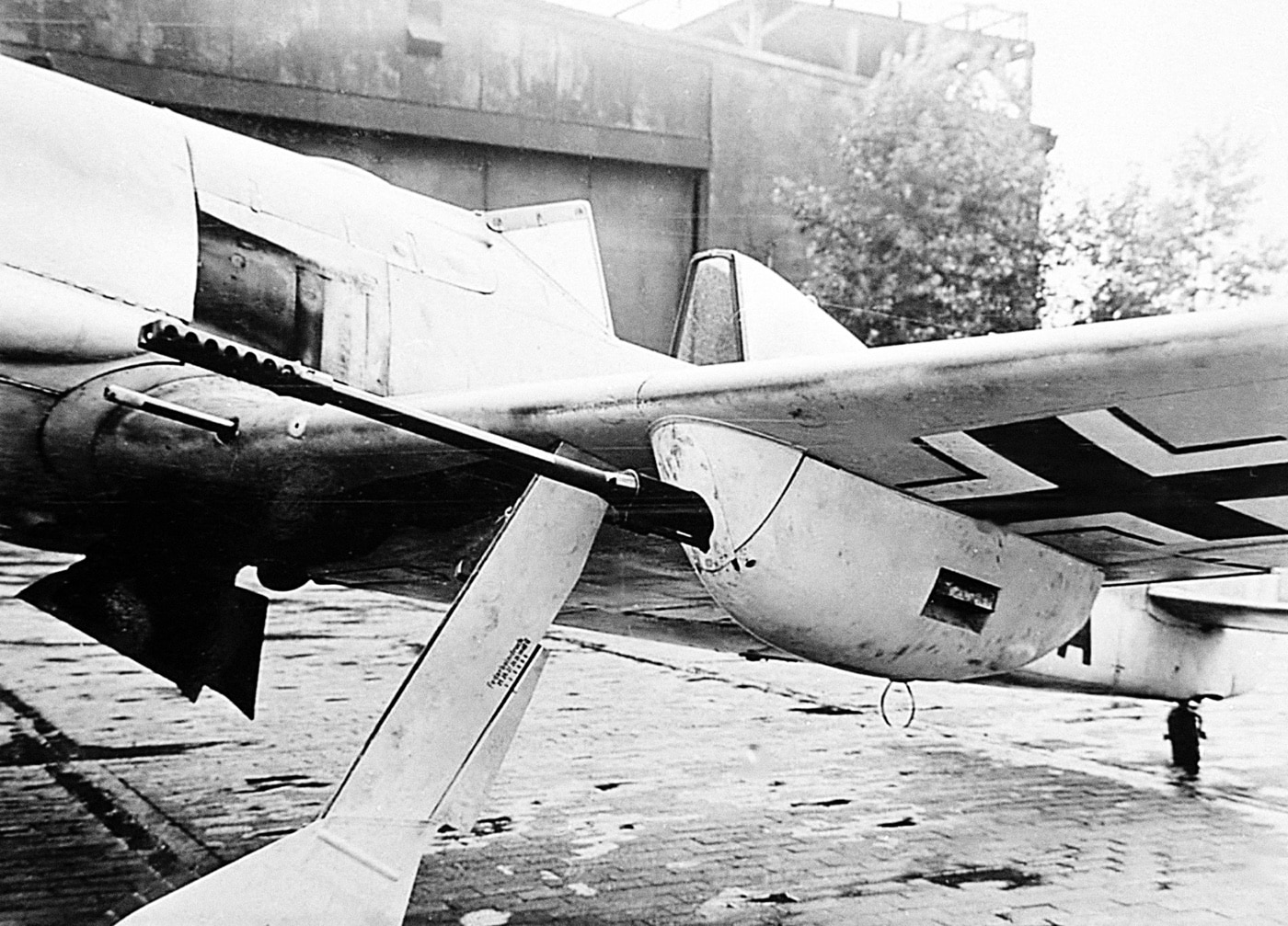
This Fw 190 A5/U11 R3 is fitted with 30mm MK. 103 cannons carried in under-wing pods. Image: Author’s collection
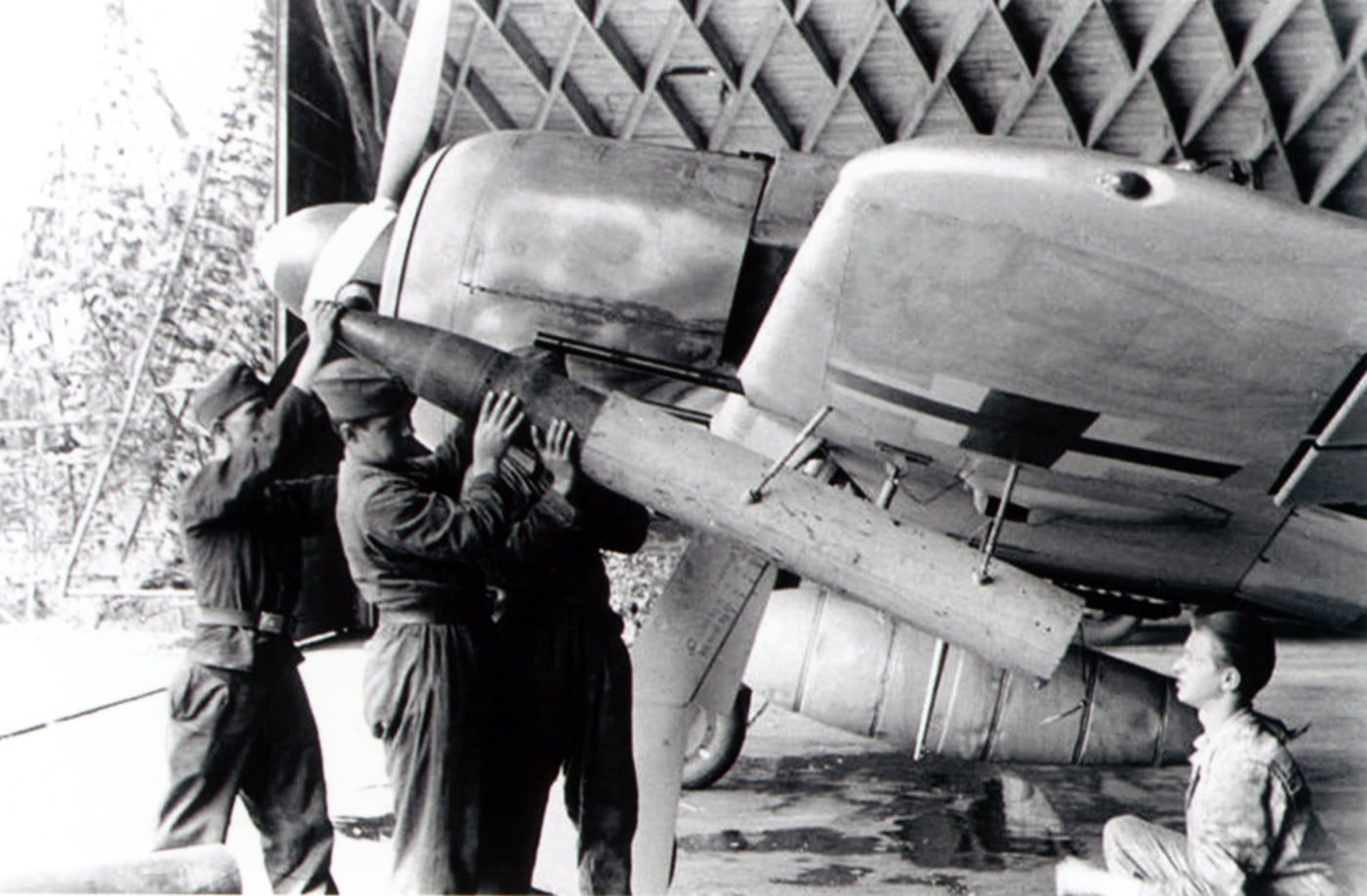
The ground crew of a German Fw 190A8 load 21cm W.Gr. 21 rocket launchers. Launches were made from 1,000+ yards, and the tubes could be jettisoned after launching. Image: Author’s collection
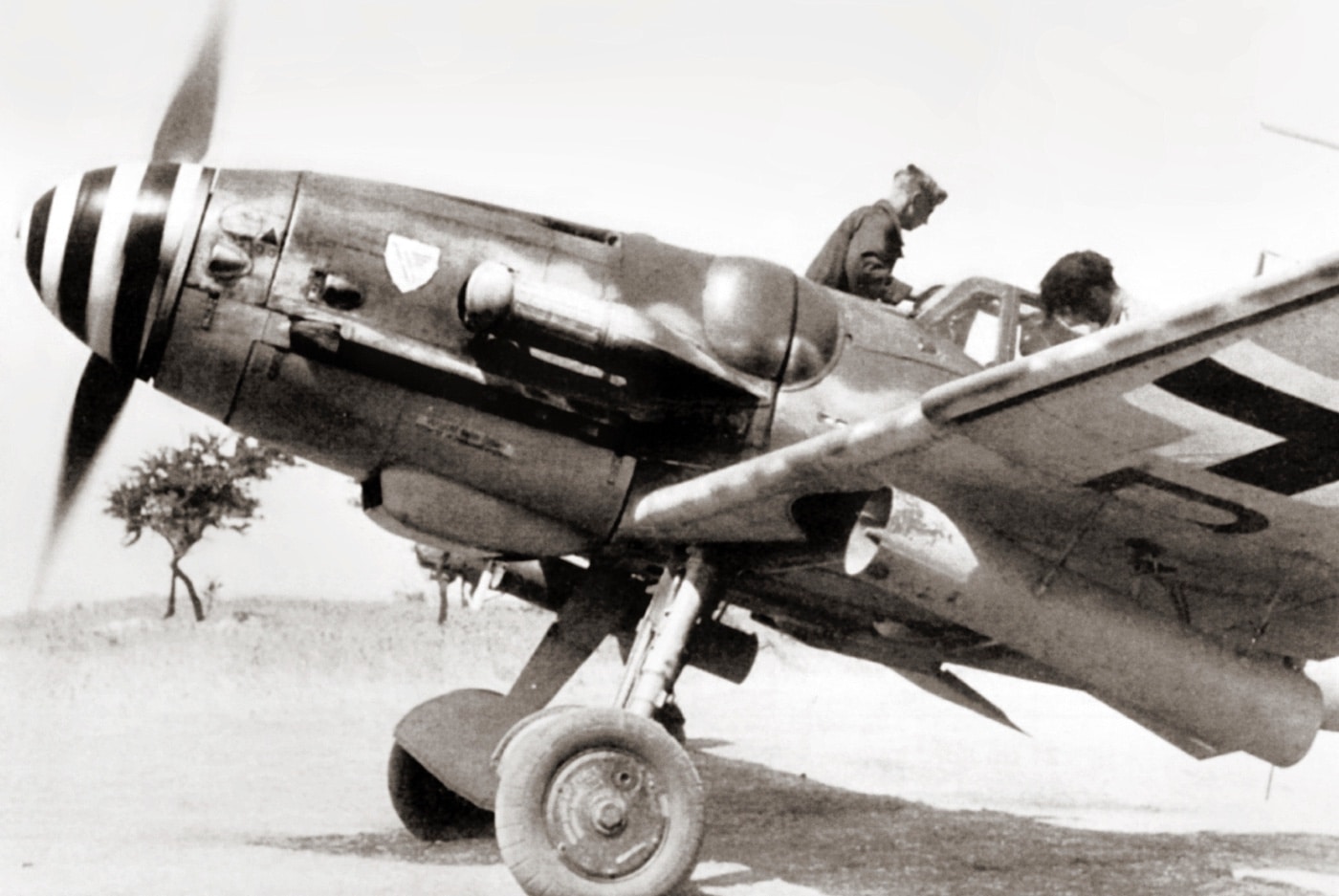
Bf 109 interceptors also carried 21cm W.Gr. 21 rocket launchers to attack 8th AF bomber formations. Image: Author’s collection
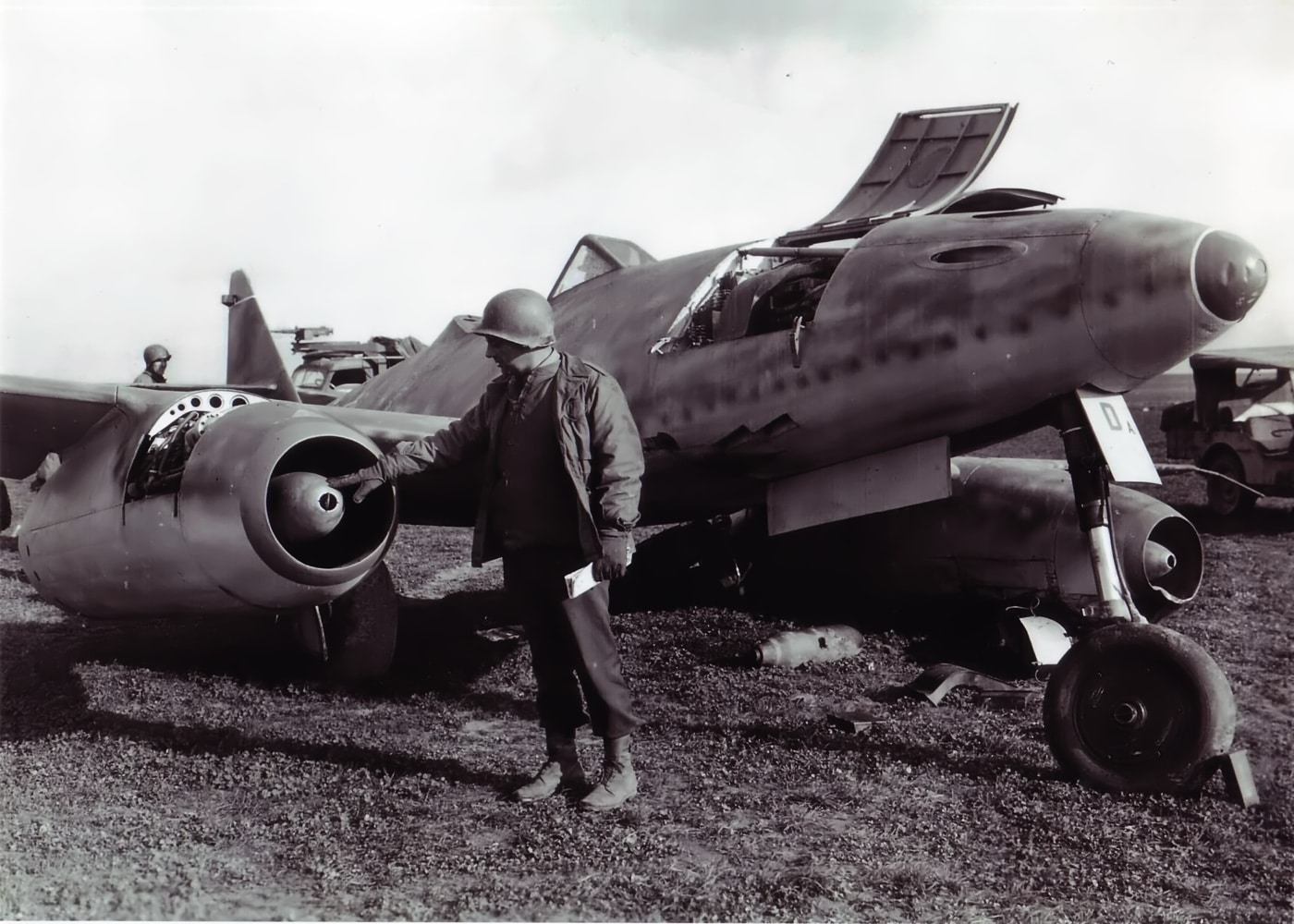
The Messerschmitt Me 262 jet fighter had four 30mm MK108 cannons in the nose as its primary armament. The short barrels meant the pilot had to get close for accurate fire. Image: NARA
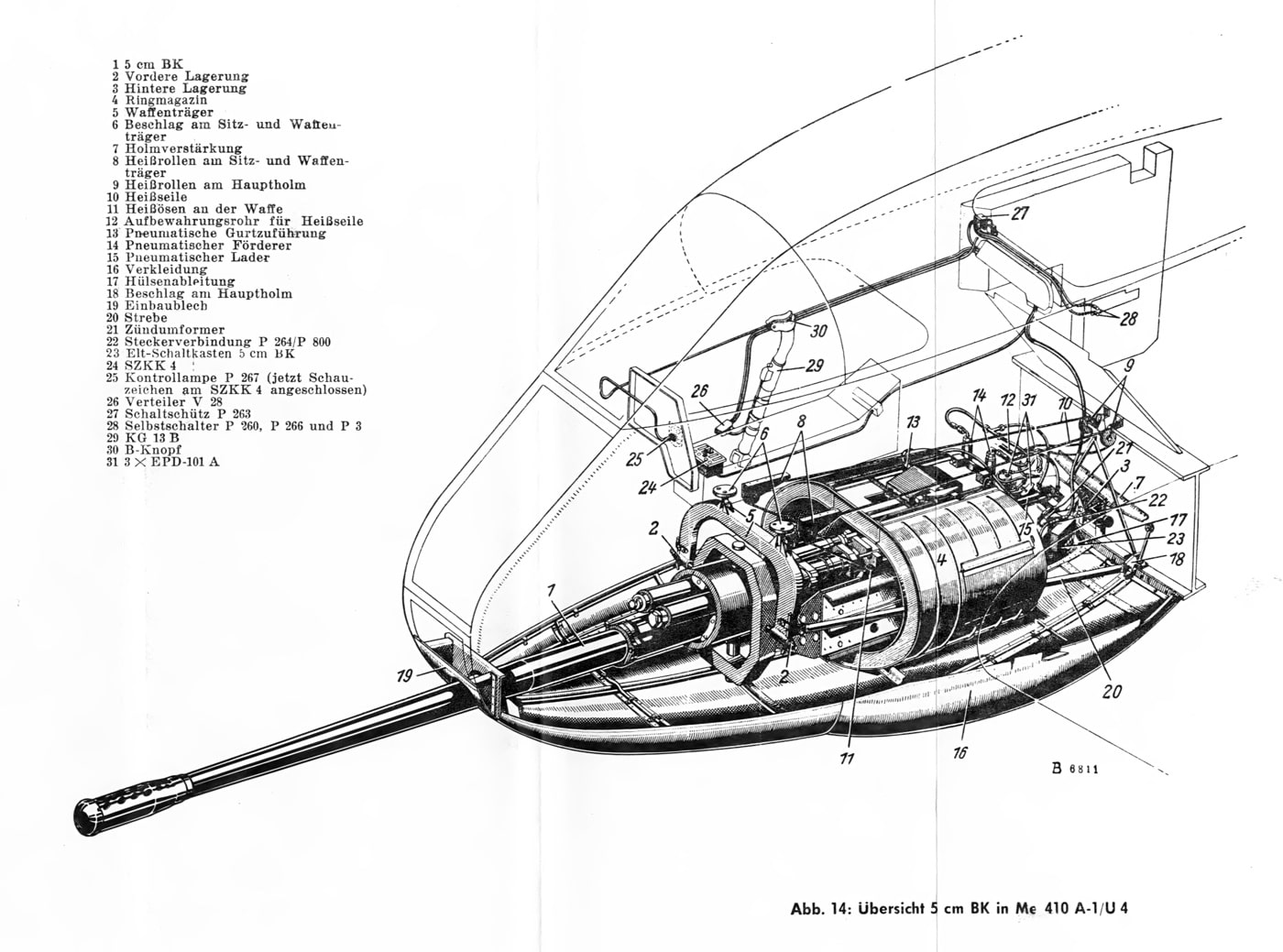
The 50mm BK-5 gun could be fired from well beyond the range of the B-17’s guns, and a single hit would be enough to bring down the bomber. Image: Author’s collection
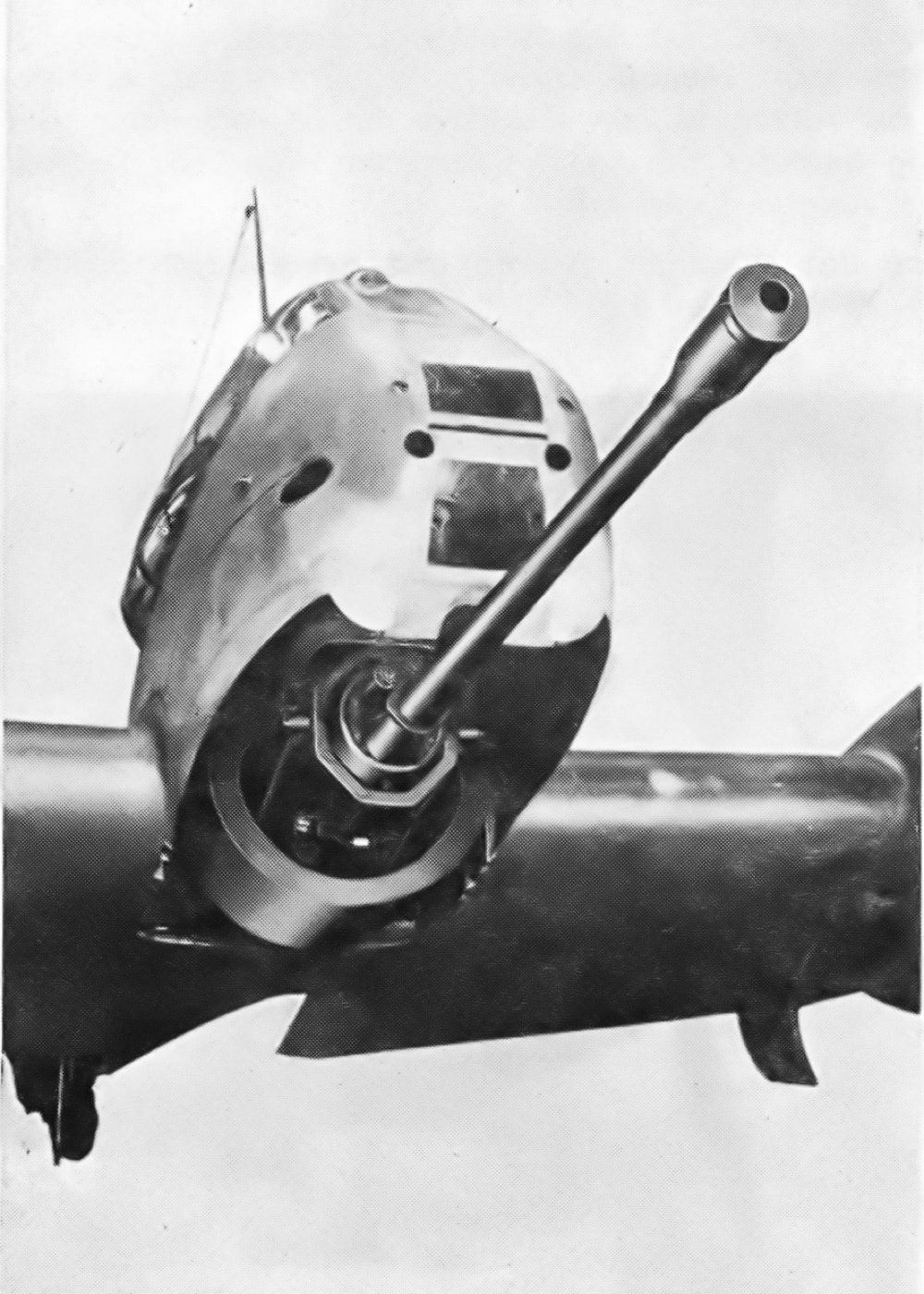
Front view of the Me 410 heavy fighter with the 50mm BK-5 cannon fitted under its nose. Image: Author’s collection
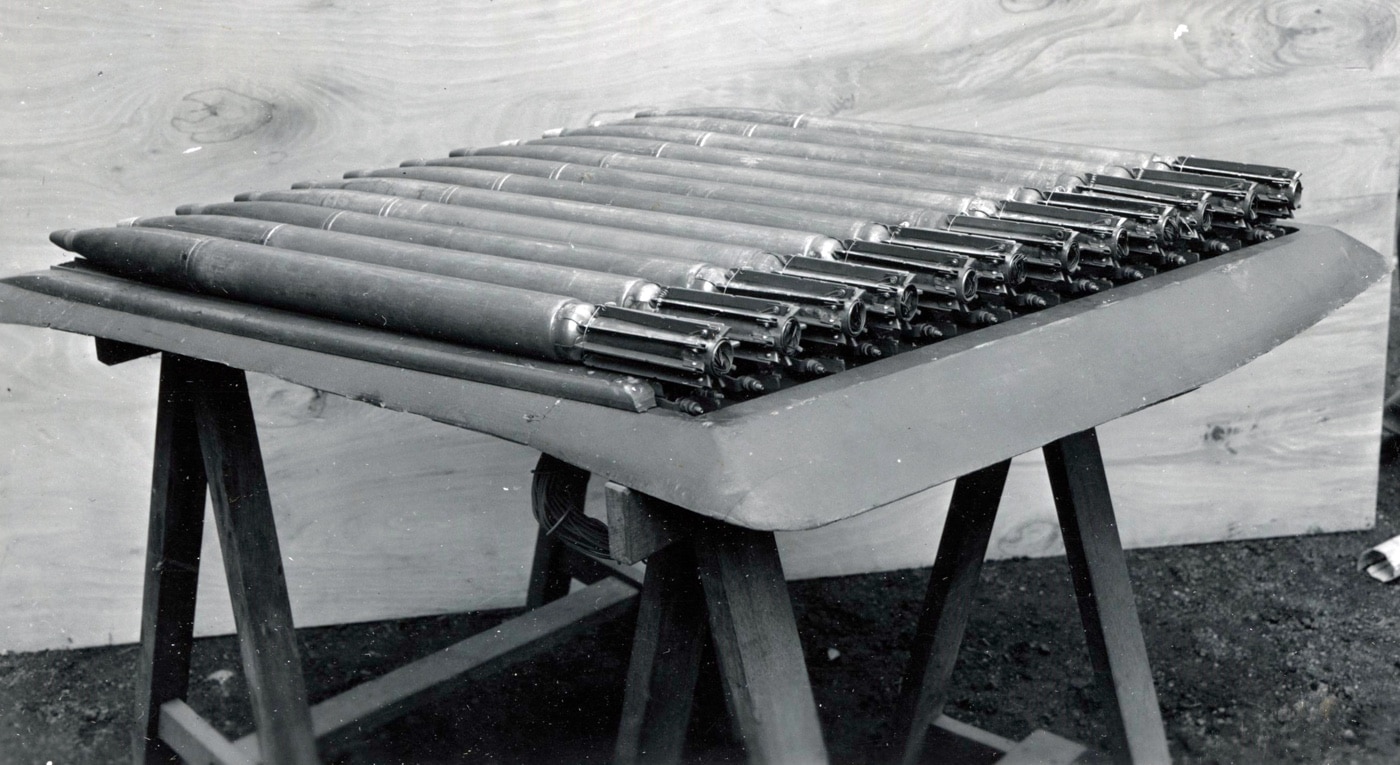
Late in the war, some Me 262 fighter jets were equipped with the R4M 55mm air-to-air rockets. The R4M had a range of a little more than 1,000 yards, and two hits could bring down a B-17. Image: NARA




